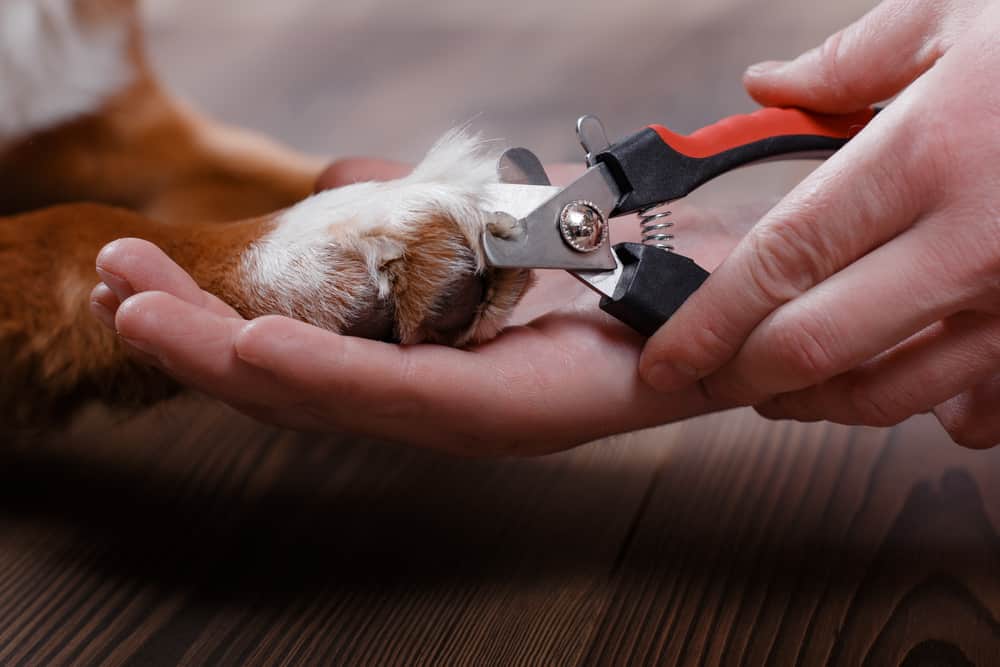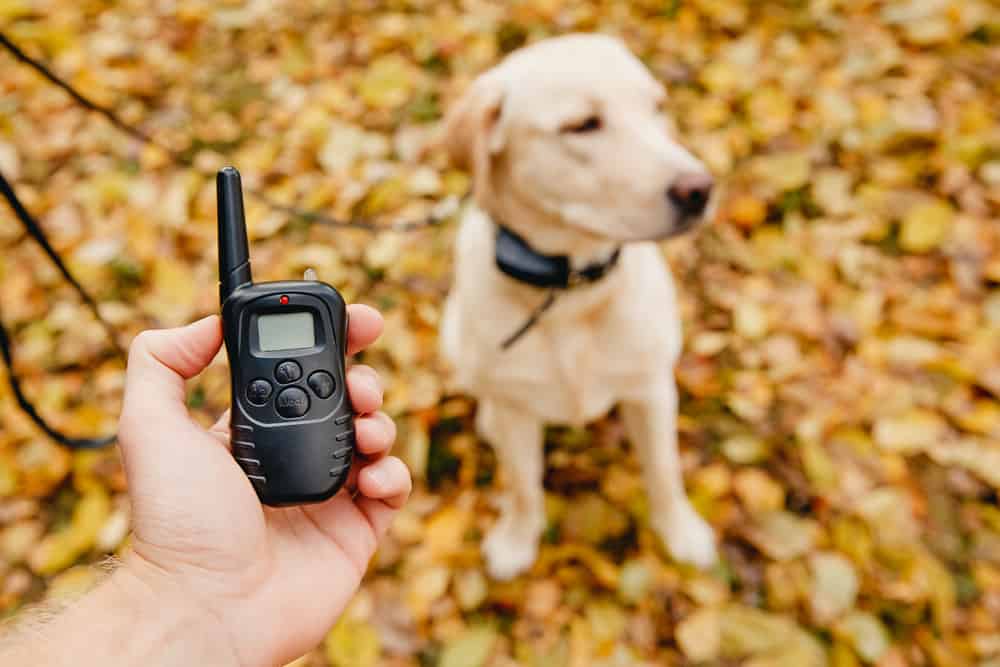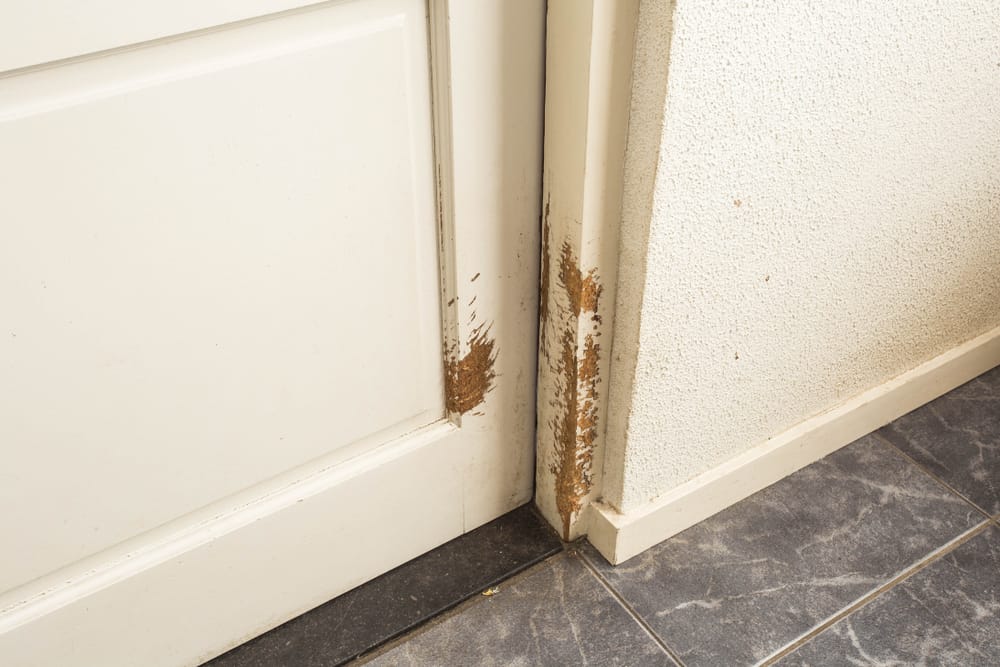How to Stop Your Dog From Scratching the Door

Our four-legged friends make our house a home. Their companionship gets us through the tough times in life, and they give us something to look forward to after every tiring day at work.
But, sometimes, our furry friends welcome us home in ways that are not quite as lovable. One way, in particular, brings us to the breaking point. Yep, you’ve probably guessed it by now; we’re talking about paws, claws, and torn-up doors.
Incessant door scratching is not only frustrating for you, it can also be harmful for your dog. They risk damaging their nails, and they could even end up with dangerous splinters in their paws.
That’s why it’s important you tackle your dog’s door scratching before it becomes entrenched as a learned habit. In this comprehensive guide, we’ll be walking you through how to train your dog to stop scratching. But first, we’ll explain why your (usually well-behaved) dog can’t resist scratching the door.
Why Does My Dog Scratch the Door?
Let’s get this out of the way: your dog is not wreaking havoc on the door to frustrate you, nor are they trying to add their own personal touch to your décor. If your furry friend won’t stop, it typically means they’re trying to communicate.
For example, your dog may scratch at the door to communicate to you that they want to be let out; perhaps they need to do their…“business,” or perhaps they want to chase the neighbor’s cat they just glimpsed plodding along.
Boredom, and a lack of exercise, are other common causes; it’s a way they can keep themselves busy and release their pent-up energy. Dogs that suffer from separation anxiety also tend to scratch at doors, particularly when their owner leaves the house. So, if it’s a way to communicate, the question becomes: how can we get our pups to communicate in a different, less annoying way?
How to Stop Your Dog From Scratching the Door
There are plenty of tactics to take to stop your dog from scratching at the door. Here, we’ll go over the most effective ways, so you can rest assured your pup’s bad habits will be changed for healthy ones.
Keep in mind all these methods require patience and a calm attitude. Before you dive into any training, make sure your pup’s nails are well-trimmed and invest in a door protector. It’ll reduce the chance of your pup injuring themselves, and your door will thank you!

Figure Out the Cause
It goes without saying determining the drive behind their door scratching will give you the best chance at tackling it.
For example, if your dog tends to scratch the door when they’re eager for a walk, giving them an alternative way to communicate this want will bring an end to their scratching. In fact, we actually go over how to teach your furry friend a healthier way to express their needs a little further down.
Dogs are pretty easy to read, but if you’re struggling to know what exactly the cause is, try out the different measures we suggest throughout this guide. See which works best for your dog. You can also speak to a veterinarian or a professional trainer, as they have the expertise to really help you narrow down the potential causes if you can’t figure out yourself.
Ignore the Scratching
When your dog starts scratching the door, it can be tempting to open it for them to get them to stop. Sadly, doing so, even on the odd occasion, will just make them more likely to repeat this behavior in the future. After all, you’re showing your dog that door scratching will give them what they want, so they’re going to keep at it!
To prevent their door scratching ways from being reinforced, you need to ensure you don’t give it any attention. If your dog is scratching the door, simply ignore it and wait it out. When your furry friend finally stops scratching and settles down, only then should you go over to them and open the door.
If you’re finding it difficult to resist giving them attention, or they haven’t stopped scratching after a few minutes, leave the room. Make sure you’re not in their view.
Repeat this process every time your pooch scratches the door. Over time, your beloved companion will soon realize that scratching isn’t something worth doing, as they’re not getting any sort of reward out of it. Instead, being calm is the best method to get what they want. This strategy works best, however, when you add a new way for your pet to communicate.
Give Them an Alternative Behavior
Let’s be real: dogs can be persistent, and sometimes your dog is so hellbent on scratching the door they won’t settle down, no matter how long you wait. This is especially true for high energy dogs who often struggle to calm themselves.
If this is the case for your pooch, it’s best to teach them an alternative, healthier behavior they can use to communicate their desire to be let out. We recommend giving them a bell they can ring. Here’s how to train your dog to ring a bell when they want the door open:
Attach a bell to the door, and ensure it is within your dog’s reach. Then, cover the bell with something delicious and encourage them to explore it so they understand it makes a sound.
When your dog rings the bell, open the door immediately and give them a treat. Repeat this process, and make sure to always get your dog to ring the bell before they enter or exit. If they start scratching at the door, ignore it and don’t open the door.
Once your dog has got the hang of ringing the bell, fade the lure by gradually lessening the number of times you give them a treat.
Be aware that some dogs may see a hanging bell as their next tug toy. If your dog has a particular love for tug of war, you can use a floor level training bell instead, which is basically a button your dog can press. A floor-level bell is also good for larger dogs who may inadvertently scratch the door when attempting to paw at a hanging bell.
Make Your Dog Comfortable With Separation
If your dog suffers from separation anxiety, the measures above may prove futile – their door scratching is a result of overwhelming stress and fear, and it’s more of a soothing method than a way to communicate. The best way to manage your dog’s anxiety-related scratching is to gradually desensitize them to being alone:
- Tell your dog to “stay” in their bed (or an area where they feel comfortable) and slowly walk away from them. If they stay calm, reward them.
- Repeat this (don’t forget the reward afterward!), but increase the amount of time they have to be in the stay position, as well as the distance you are from them.
- When your dog becomes comfortable with this, leave the room, away from their sight.
- If successful, you can now try leaving the house. When you leave the house, make sure to gradually increase the duration you’re outside. Initially, you should only leave the house for a few seconds.
This process will really help your dog build their self-control and it’ll make them more comfortable with being alone. Plus, it’ll help to lessen their fear, as through this training you’re showing them that when you leave from their view you will return, and aren’t gone for good.
Sadly, this process won’t work for every dog; it can be difficult for a dog to overcome separation anxiety, especially if they’ve experienced trauma in the past. As such, always speak to a veterinarian or trainer for guidance. You can also try soothing their anxiety, which we cover below. But at the end of the day, dogs are wired to want to spend time with us, which makes it difficult to completely train out separation anxiety.
Soothing Anxiety
When you leave the house, it can be tempting to hug your pup before you go. However, this behavior will just make their anxiety worse, as they’ll associate this affection with you leaving and get worked up. Instead, don’t make your departure a big deal. Remain calm and do not give them attention when you leave.
Some dogs tend to get anxious when you pick up your keys and coat – they recognize this behavior as the sign you’re about to leave. If you’ve noticed these are triggers for your anxious pup, play with your keys and put on your coat at random times, but don’t leave the house after doing so. This will probably help to desensitize them to these signs.
Make the environment safe and comfortable for your pup when you’re gone. You can use a calming collar, pheromone dispenser, a soothing toy, or anxiety-relieving treats. You could even leave them a shirt that has your scent to snuggle up with. We also recommend investing in a bolster dog bed, as this type of bed can really help make your dog feel safe. Below, we go over more ways to create a snug environment for your fur baby.

Make Alone Time Fun and Comfortable
Dogs get bored easily, particularly if they’re alone and don’t have anyone to interact with. It’s important you make sure your pup has (non-destructive) ways to keep themselves entertained when you’re out and about, otherwise you’ll definitely be returning to a scratched-up door!
There are plenty of ways to make their alone time fun. You can give them fun toys to play with, edible chews, or mentally stimulating food toy puzzles.
Of course, ensure that these toys (and chews) don’t pose a choking hazard, and supervise your dog with them first. This way, you’ll be able to tell if the toys will withstand their jaw and claws. Your veterinarian can also give you advice about which ones are safest for your dog.
Another way you can make their alone time comfortable is by putting on some relaxing, classical music. It may seem strange to play Für Elise for your pooch, but research has shown classical music can actually have a soothing effect on dogs, and the sound will also help to hide any outside noise that could stress them out.
Be aware that you shouldn’t be leaving your dog alone for long periods of time. If you have no other choice, get a trusted friend to watch your dog, or hire a pup-sitter!
Corrective Approach
Positive reinforcement (like the training methods above use) is, hands down, the best way to achieve results. But, if all else fails, correction training may be the solution. Correction involves discouraging your dog from repeating an unwanted behavior by making it unpleasant for them.
Next time you leave the room, wait and see if your dog begins to scratch at the door. If they do, open the door and firmly tell them “No” while maintaining eye contact. When your dog looks away and moves back, ask them to lie down or sit. Once they do so, give them a treat and praise them.
This will show your dog that while scratching isn’t a behavior you appreciate, there are behaviors that will get a positive reaction from you, which ultimately encourages them to do the latter to win your approval.
Keep in mind that the corrective approach isn’t the most effective way to tackle door scratching; most dog trainers recommend positive reinforcement in a vast majority of circumstances. Your pooch might not understand why you’re telling them “no,” and even if they do, they’ll probably keep scratching the door when you’re not around. After all, you’re really only teaching them that you don’t like their scratching, so once you’re out of the picture, they have no other reason to keep their paws off the door.
Plus, be aware that if your dog suffers from separation anxiety, the corrective approach may make their anxiety worse, and it can also make dogs more aggressive.
Use Deterrents
Another way you can make door scratching an unpleasant experience for your dog is by using a shock collar, or by spraying the door with a scratch deterring spray.

However, similar to the above, deterrents may not give you effective results, and they can worsen anxiety and aggression, especially if they’re not used responsibly. Use them as a last resort and always in conjunction with another method.
Preventing Your Dog’s Door Scratching
When it comes to stopping your dog’s door scratching ways, training is only half the battle – you must aim to prevent it from happening in the first place. Having a healthy, stimulated dog will set your fur baby up for success.
Set a Routine
Dogs love predictability – knowing what to expect gives them a sense of security and safety. It’s therefore vital your dog has a routine, or some form of structure in their day-to-day life. Without this, your dog is more likely to feel scared, insecure and stressed, all things that can lead to anxiety-related door scratching.
Plus, if your dog scratches the door to communicate with you when they want to be let out, chances are a routine will stop this behavior. After all, your dog won’t feel the need to communicate their desire for a walk if they know they’ll always be walked around midday.
If you need help with creating a stimulating and clear routine for your pooch, check out this guide.
Exercise and Mental Stimulation
It goes without saying giving your dog plenty of exercise and mental stimulation throughout the day will reduce the likelihood of door scratching; they’ll feel content and won’t be brimming with energy.
How much exercise and mental stimulation your dog needs depends on several factors, including age, health, breed, and energy level. To get a good idea of how much exercise your dog needs, check out this handy Dog Exercise Calculator.
Use Baby Gates
If your furry friend loves always being by your side, it can be difficult for them when you shut them out of the room you’re in. Whether you’ve shut the door because you’re on a Zoom work call, or because you’re snoozing away, your dog still wants your company, and wants to see what you’re up to, hence their door scratching begins.
While you may be thinking the solution is to just give your pup 24/7 access to your whereabouts in the house, it doesn’t have to be that way. An easy solution is to simply have a baby gate in place. A baby gate will keep them out of the room, but it will let them see where you are and what’s going on, ultimately helping them to feel more at ease.
Put up a Barrier
When you’re not around, it’s a good idea to put up some sort of barrier that stops your pooch from getting to the door. Even if you’ve been training them, slip-ups will happen on occasion, especially if they’ve had this pesky habit for a long while.
Plus, a barrier can also work as a preventative measure for puppies: if your puppy can’t get to the door, there’s no chance of them discovering how much fun scratching at it can be!
Block Their Vision
If your dog is highly reactive, seeing people or other animals pass by could trigger them to scratch at the door as they’ll want to get out immediately to chase away the (perceived) threat. It’s therefore important you block their vision of the outside as much as possible. The best way to block their vision is by using window film, or by putting up blinds.
Of course, a reactive dog will benefit the most from appropriate training that helps them overcome their reactivity.
Invest in a Doggy Door
If your dog only scratches at the door when they want to be let out, a quick fix would be to get them a dog door. Though, this is only possible if your yard is secure and you live in a safe area. If you live in a place with lots of wildlife, it’s best to avoid a doggy door – wild animals could see the door flap as an open invitation to your home!
Keep in mind a doggy door doesn’t really address the root of your dog’s behavior. If the door flap is removed, they’ll likely go back to their door scratching habit. As such, we recommend trying training measures first before resorting to a doggy door.
Oh, and if your dog loves digging, be aware that no yard is truly secure. They might be able to dig their way out.
How to Fix a Scratched-up Door
Great! You’ve done all the training and your furry pal has finally overcome their door scratching habit. Now, it’s time to repair that scratched-up door. For a useful and beginner-friendly guide on how to do this, click here.

Final Thoughts
The sound of your dog scratching at the door doesn’t have to be your wake-up call, nor do scratch marks have to be the sight you’re greeted with every time you return home. By using the methods above, as well as taking preventative measures, your furry friend will soon have all paws on the floor, and not on the door!
And remember: be calm and patient with your pup. It will take time, but they’ll get there in the end.




